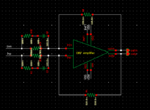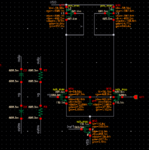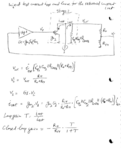Ali263
Member level 1
I am designing a fully differential amplifier, Two stage amplifier, with a common mode feedback network ,Single stage Differential Amplifier, with Active Load.
When i connect the amplifier in close loop I expect Dc gain to be set by R2/R1 , R2 is feedback resistor and R1 is input resistor but when I do simulations i get a dc gain of -2db for R2/R1=1
When i connect the amplifier in close loop I expect Dc gain to be set by R2/R1 , R2 is feedback resistor and R1 is input resistor but when I do simulations i get a dc gain of -2db for R2/R1=1






